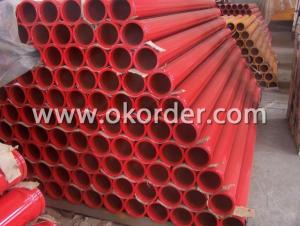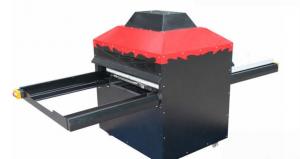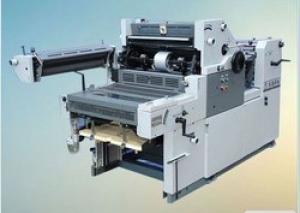Digital Mug Heat Press Transfer Machine
- Loading Port:
- China Main Port
- Payment Terms:
- TT or LC
- Min Order Qty:
- 1 Set set
- Supply Capability:
- 1000 Sets Per Month set/month
OKorder Service Pledge
OKorder Financial Service
You Might Also Like
Detailed Product Description
220V,110V Digital Mug Heat Press Transfer Machine
1.0-399 temperature range,0-999 Sec timing Range
2.One year warranty & CE
I. Mug Heat Press Transfer Machine Parameter :
- Diameter 7.5~9.5cm or 5.0-7.0cm
- Volume: 410*380*300mm
- Weight: 9KG
- Voltage:220V/110V
- Power:450W
- Temperature Range 0-399
- Timing Range 0-999 Sec.
II. Mug Heat Press Transfer Machine technology:
- No limit on height of mug,could turn left and right,choose the most suitable place to print
- Be able to bear high temperature with silica gel,press equal,220°Ccould bear
- Light weight and portable, for use at malls, flea markets, shows, and more.
- Fully digital temperature control
- The heating mat could be heated if no mug in the machine
- Easy pressure adjustment ,Solid steel welded framework
- An amazing 3-Year/3,000-mug warranty on the heating parts
- Soft heater liner for accommodating inconsistent mugs
- Temperature readout accuracy +-1C
- User able end-of-cycle alarms
III. How to make a photo mug:
Step1: Place the print face down on the mug and secure it with thermally resistant tape. Place the tape on opposite ends of the print.
Step2: Slide the mug the mug press and apply pressure. Fifteen to twenty seconds later after the temperature reaches 180°C, remove the mug from the mug press.
Step3: Allow the mug to air cool at room temperature. Remove the tape when the mug is cool.
- Q: Should be prepared to what kind of equipment and materials and tools and equipment?
- The role of the tube plate is heating tube bundle and the tube side and shell side fluid separation. You can keep the swelling down Tube plate and pipe connection or welding. Inflation connection is the use of expansion tube bulge, a significant plastic deformation, to achieve the purpose of sealing fastening between tube and tube plate according to the pressure. Expanding joint method is usually used segment of the carbon steel pipe carbon steel or low alloy steel, the design of less than 4 million mpa pressure, design temperature does not exceed 350 °. It is shell (3) of the head and tube box Head and tube box located at both ends, it is the function of control and distribution of tube side fluid.
- Q: Heat conduction oil boiler equipment is normal, no pressure after running system
- Second, check in and out of the main boiler pressure gauge whether there is a pressure or differential pressure, if there is no pressure or pressure is too low, that heat conduction oil may have a problem, the main loop pump or system lack of heat conduction oil, check before the pump filter plugging, check the tank oil level high, see if it is short of oil.
- Q: How hot is spread from one end of the metal strip to the other end of the
- Mainly through the way of heat transfer, by metal molecular vibration energy transmission to the surrounding molecules to transfer heat. Heat conduction is no macroscopic movement at the time of the heat transfer phenomena in the medium, its all can happen in solid, liquid and gas, but strictly speaking, only is the pure heat conduction in solids, and fluid even in static state, which will be due to the temperature gradient caused by the natural convection resulting from the density difference, therefore, the heat convection and heat transfer in the fluid at the same time.
- Q: Why heater before operation will be into the air in the device?
- General way of heater is a heating medium for the required material heating, heat conduction oil heater, for example: air does not do, unstable pump pressure, the air blocking in the pipe, heat conduction oil can't circulation, quantity of heat cannot be passed on to the material.
- Q: How to prevent thermal equipment scale?
- After thermal equipment fouling, often caused by poor heat transfer tube wall temperature, when the temperature exceeds the metal can allow temperature, it could cause bulge and pipe explosion accidents. Water boiler water slag is too much, can affect the boiler steam quality, and perhaps blocking furnace tube, threatening the safe operation of boiler. In order to prevent fouling thermal equipment, from the following several aspects: (1) try to reduce the water hardness. (2) as far as possible to reduce silicon compounds to water, the content of aluminum and other metal oxides. (3) reduce the iron content in the water of boiler, increase the iron removal equipment. (4) reduce the copper content in water, adding complexing agent to the boiler water. (5) good feed processing, to prevent corrosion.
- Q: What is the working principle of heat pipe
- Heat pipe is a kind of high heat conduction performance of the heat transfer element, it through the closed tube shell substance in evaporation and condensation heat transfer, high thermal conductivity, excellent isothermal property, heat transfer area on either side of the hot and cold can be arbitrary change, heat transfer and temperature can be controlled and a series of advantages over a long distance. Made up of heat pipe heat pipe heat exchanger has high heat transfer efficiency, compact structure, small fluid resistance loss, is helpful to control the dew point corrosion, etc.
- Q: What iscalled cooler closed?Is used in cooling water temperature and adding vacuum pump work in the refrigeration system
- Retrofit scheme is rod baffle heat exchanger instead of vertical bow plate heat exchanger, without changing the original shell heat exchanger, only change the heat exchanger tube core, is still the vertical installation. Shell side fluid adapted the aspirant, accessory equipment and pipe interface are the same. Heat exchange tube from d19mm x 1 mm brass tube replacement d19mm x 2 mm into boiler seamless steel tubes. Transformation technical agreement requirements, unit with full load, water temperature not less than 21 ℃, modified heater performance test data and calculated results are shown in table 2
- Q: Heat exchanger is what to do, have what use?
- According to the structure of the heat exchanger can be divided into: can be divided into: of floating head heat exchanger, fixed tube plate heat exchanger, u-shaped tube plate heat exchanger, plate heat exchanger, etc.
- Q: What are the factors affecting heat transfer rate of the chemical equipment
- Cold and hot medium temperature, cold and hot, cold and hot medium heat transfer medium flow state if (fluid), thermal conductivity, heat transfer interface and other hot and cold medium heat capacity, etc
- Q: What is heat transfer, heat transfer is wha
- Heat conduction is no macroscopic movement at the time of the heat transfer phenomena in the medium, its all can happen in solid, liquid and gas, but strictly speaking, only is the pure heat conduction in solids, and fluid even in static state, which will be due to the temperature gradient caused by the natural convection resulting from the density difference, therefore, the heat convection and heat transfer in the fluid at the same time.
1. Manufacturer Overview
| Location | Guangdong,China |
| Year Established | 2007 |
| Annual Output Value | |
| Main Markets | 7.69% North America 7.69% South America 7.69% Eastern Europe 7.69% Southeast Asia 7.69% Africa 7.69% Oceania 7.69% Eastern Asia 7.69% Western Europe 7.69% Central America 7.69% Northern Europe 7.69% Southern Europe 7.69% South Asia |
| Company Certifications | ISO 9001:2008;SGS; CE |
2. Manufacturer Certificates
| a) Certification Name | |
| Range | |
| Reference | |
| Validity Period |
3. Manufacturer Capability
| a) Trade Capacity | |
| Nearest Port | Shenzhen,Guangzhou,Zhuhai |
| Export Percentage | 81% - 90% |
| No.of Employees in Trade Department | 11-20 People |
| Language Spoken: | English, Chinese |
| b) Factory Information | |
| Factory Size: | 5,000-10,000 square meters |
| No. of Production Lines | 6 |
| Contract Manufacturing | OEM Service Offered Design Service Offered Buyer Label Offered |
| Product Price Range | Average |
Send your message to us
Digital Mug Heat Press Transfer Machine
- Loading Port:
- China Main Port
- Payment Terms:
- TT or LC
- Min Order Qty:
- 1 Set set
- Supply Capability:
- 1000 Sets Per Month set/month
OKorder Service Pledge
OKorder Financial Service
Similar products
Hot products
Hot Searches
Related keywords





















